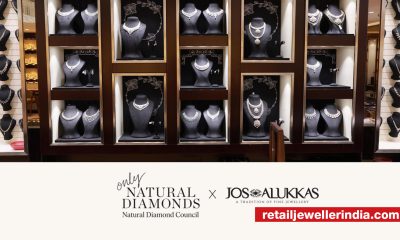Prime Story
SGL Retail Jeweller India Forum 2019: Product Differentiation, Brand Value Excellence to Propel Growth

The harbinger of knowledge growth in jewellery retail, SGL Presents Retail Jeweller India Forum 2019 started their 6th annual knowledge forum at Sofitel, BKC Mumbai on February 9.
GJEPC chairman Pramod Agrawal, GJC chairman N Anantha Padmanaban, Retail Jeweller Media associate publisher Samit Bhatta, SGL directors Shirin Bandookwala and Chirag Soni inaugurated the forum with the auspicious lamp-lighting ceremony.
The Power of Business Innovation
The first session featured Piyush Kumar Sinha, CRI Advisory and Research IIM-Ahmedabad. “The biggest innovation is when you let somebody come and buy it. Innovation is a drive, not a tactic. Lot of things we do are differentiated but they may not seem relevant to customers,” he said, urging retailers to influence the five senses of consumers with better experience by being differentiable.
Sinha said sustainability is also about effectiveness as one needs to work on the revenue front also. “Start working on the complete value chain in order to assure sustainability down to your customers,” he mentioned, highlighting the functional, psychological and social aspects of retail trade.
Innovatively organising Retail landscape:
The second session had a panel discussion by Samir Sagar, Manubhai Jewellers, Seema Mehta of Kirtilals and Darpan Anand of Punjab Jewellers. Moderator Divyesh Shah underlined how in the wake of growth, it is a challenge to inculcate culture into the people which the retailers hire. He highlighted, “We need to know how to transfer our legacy to our next generation as standards are going to change with time as strategies change.”
Mentioning Kirtilal’s achievement in this regard, Mehta said a balance between technology and creativity have enabled them to involve youth in their think tank, including engineers. Talking about engineers’ role, Seema said, “In our Clutch collection, we conceptualised the convenience of the travelling woman of today. The pieces are multifaceted and can be used differently. The young engineers have worked in tandem with designers in our brand. You can fit a large piece into a small box.”
Mentioning about the transition process of a family jeweller to a brand, Punjab Jewellers, Darpan Anand said, “We had 5 employees in our store when I joined. My market, being Madhya Pradesh, didn’t have adequate processes for business. We needed processes and systems to make our business foolproof. We used software 25 years ago to organise.”
Punjab Jewellers’ innovative campaigns helped project the best of the designs and also the consumer experience. At present, we did a successful campaign of winning Rs. 1 lakh everyday. In our January work schedule, we had 90% growth. “Sabse sastey 7 din, our campaign, helped make 250% growth in that month,” Anand maintained.
Inventory management has been the holy grail for us, said Samir Sagar of Manubhai Jewellers. “We used CRM programme to track what the customer wants and the reason for walking out. Thereby, we aligned customer behaviour with our business strategy,” Sagar said. We revamped strategy for bridal jewellery. So we launched another boutique ‘Madhuban by Manubhai; which immerses the customers in story-rich jewellery, Sagar concluded.
Among the few key takeaways from the discussion, the first one was the fact that association with a good brand only adds limited value to business. So the brand, one is associating with should only be considered as an add-on to help boost one’s primary business. The next tip was a combination of training and providing customer experience that would always help elevate brand value of progressive retailers. The last takeaway was the combo of focus on experience, productivity, integrity of creativity and quality assurance.
‘Browser-based ERP’
This panel started with Vivek Das of Synergics, Gurukeerthi Gurunathan, co-founder, Caratlane and Siddhartha Sawansukha of Saansukha Jewellers.
“Procurement of jewellery should have a vendor purchase order in your back office to make the process seamless. The next step is to assure a vendor portal too. The next challenge is getting data from job workers when your product is ready,” said Vivek Das, Synergics.
Das added that having an automated channel of communication gets rid of the need for the owner to be physically present in store. A salesperson requesting a discount should be automated for higher transparency and faster execution of products. “39% customer frustration is due to long billing time. You need an engineer to engage the customer in a better way. CRM should be beyond birthdays and anniversaries. We need a watch list and scan the jewellery so that we know the basic details of a jewellery the customer likes,” he added.
Case studies of Caratlane and Sawansukha Jewellers were then presented. “For Sawansukha, we helped build a link between customer, vendor and retailer, through an IT-enabled jewellery ecosystem,” said Das.
Gurukeerthi Gurunathan, co-founder, Caratlane, said, “Since Caratlane was born digital a company, we rethought how data moved across systems. The first part is to start from raw materials to tallying accounts. From an online business to an omnichannel, we’re also having a heavy presence in physical retail today. Systems and standardisation play big roles in boosting growth
Discounting, a challenging topic of debate, was taken up by Siddhartha Sawansukha who said that ERP system helps know the last level of your sale inclusive of discount. In favour of getting the small chunk of amount, you should get rid of negotiation. Multiply your sale rather than multiplying the number of discounts.”
Gurunathan said the source of truth always lies on ERP, from where we have built a data warehouse. 70%tof walk-ins are of people who have already surfed about their products online. This streamlines the one-on-one dialogue between customer and sales staff.”
While sourcing data from vendors, Gurunathan said, “Our goal was to inform about reception of the production. Matching the differences in gold price asked for and the gold price received has also been streamlined by the ERP system.
In the Q n A session, the debate of discounts came up on which Siddhartha Sawansukha made a point about drawing the borderline. “We opened Sohna by Sawansukha where a guy came in and said. We faced a situation where we were about to give bigger discounts to an old customer while the new customer felt deprived. We need to have one price for every customer,” he said.
Echoing the same thought, Gurunathan said the way forward to avoid discounts is to give loyalty points that they can redeem while purchasing jewellery from the same brand later as discounts are the most common way to start a price war.
Grown Diamonds
Samuel Jansen of Made By Man Diamond, presented his views on the LGD market in the U.S. “Differentiation in LGDs with U.S. focus has worked beautifully for us. From old miner to round brilliant and ideal diamonds, LGDs are going to have high-grade cuts,” Jansen said.
Presenting an eye-opening insight on the LGD market in future, Jansen said LGDs can take a 15% market share of gem-quality melee diamonds and a 7.5% share in larger diamonds by 2020. Retailers in U.S. are showing LGDs and the naturals side by side, and only due to the price difference, LGDs are being chosen.”
Jansen concluded his session by highlighting that branding is very important as it adds value to the product. He said, “Differentiation is the key to growth as different retailers in The U.S. are trying new measured in-store and outside. For instance, the hologram of a diamond campaign, featuring the ‘Born in the U.S.A’ song by Bruce Springsteen creates brand differentiation.”
Studying the abilities of all diamond detection devices through a presentation, Sangani elaborated these devices are necessary to check illegal mixing. He added that if diamonds are sourced from ethical, reputed sightholders, one can get it checked in laboratories, get them sealed and checked in-store. He said, “The amount of power consumption and weight used by machines to create LGDs. Even after CVD manufacture, HPHT treatment is done for colour enrichment.GIA has proved that the HPHT colour will change over time. SGL then presented its detection device that detects LGDs in the D-M colour range.”
Shaankar Sen, vice- chairman, SENCO Gold & Diamond says “If the consumer has an option to buy an experience at a later price, none can stop it. If you want to gift your wife or to your loved ones, you will go for natural diamonds. Again, if you want to buy diamonds for an occasion, you’ll value the competitive price LGD offers.”
People are mixing real with lab-grown to all those people who are not getting their jewellery certified in tier 3-4 cities. As a manufacturer, I feel an Indian customer is looking for worth in jewellery investment. He is conscious and scared. He’s a part of social status where he wants value, said Sangani.
Replying to his concern, Jansen said, “Education and transparency are the two biggest challenges in the Indian market. Let the consumers choose. MBM wants to build value in the LGD business bit if natural players are misleading the customer by mixing naturals with LGDs, they are ruining both the business.”
Taking about rewriting sales language, Sachin Jain, President India, Forevermark, showed the Libertaime store in Shanghai. He showed a video about how a customer selects jewellery on LED panels in-store, follows Forevermark on social media and gets a reservation code. Once the code is verified, the staff is notified about the consumer’s arrival.
“She tries all jewellery online and gets a picture clicked with those pieces for personal social media promotion. As the customer walks out with the purchase, Forevermark gets vital consumer insights on consumer behaviour. Some of these technologies will be launched at our store in Hyderabad. The RFID tray will show you the highest tried on product. Heat mapping will help trace retailers how the consumer tried jewellery and opted for the purchased one,” said Sachin Jain.
Talking about the sweeping changes in technology, Hozefa Attari of Networkbay Retail said, “In 2006, research was offline and shopping was a time-consuming factor. In 2018, phone became central to shopping. Almost 28% of millennials recommend about jewellery on social media.”
Matthieu Rochette of Centdegres (China & South Asia) showed how the brand helped standardise the retail doors of Chow Tai Fook with better representation and display of products. Talking about prospects in Indian retail, Rochette said, “We invented the Ayurvedic workshop wherein we designed the in-store retail according to the geography of India. Reinventing ones’ strategy is vital to maintain customer interest in physical stores.”
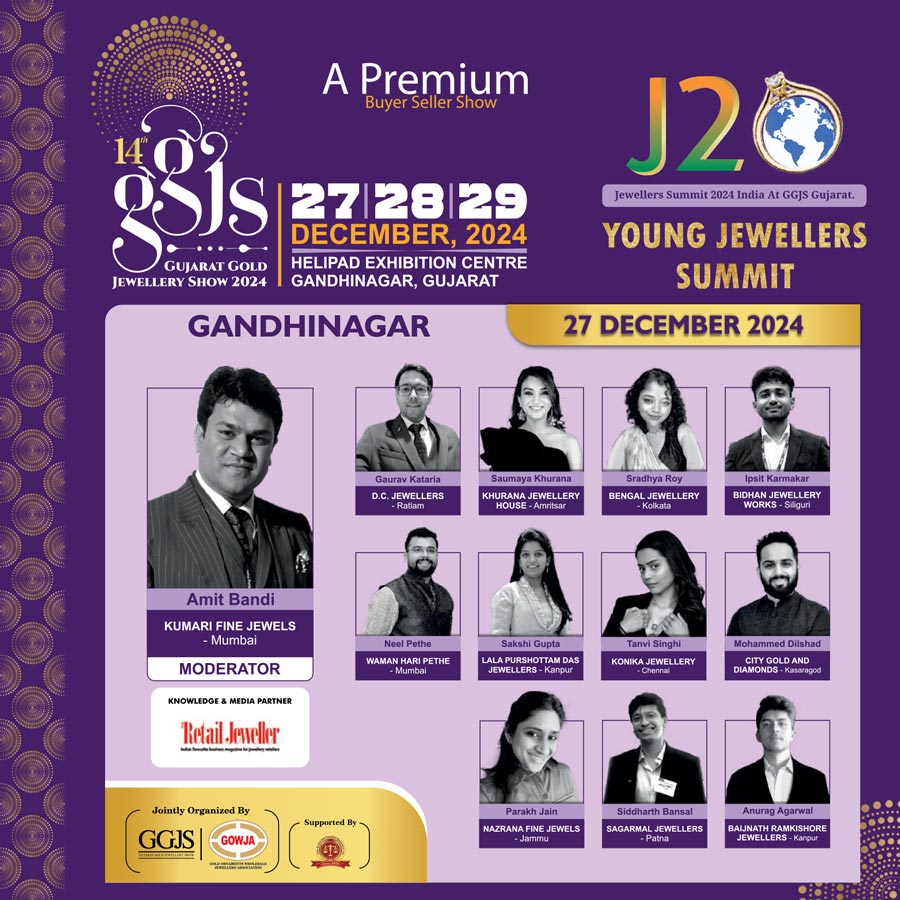
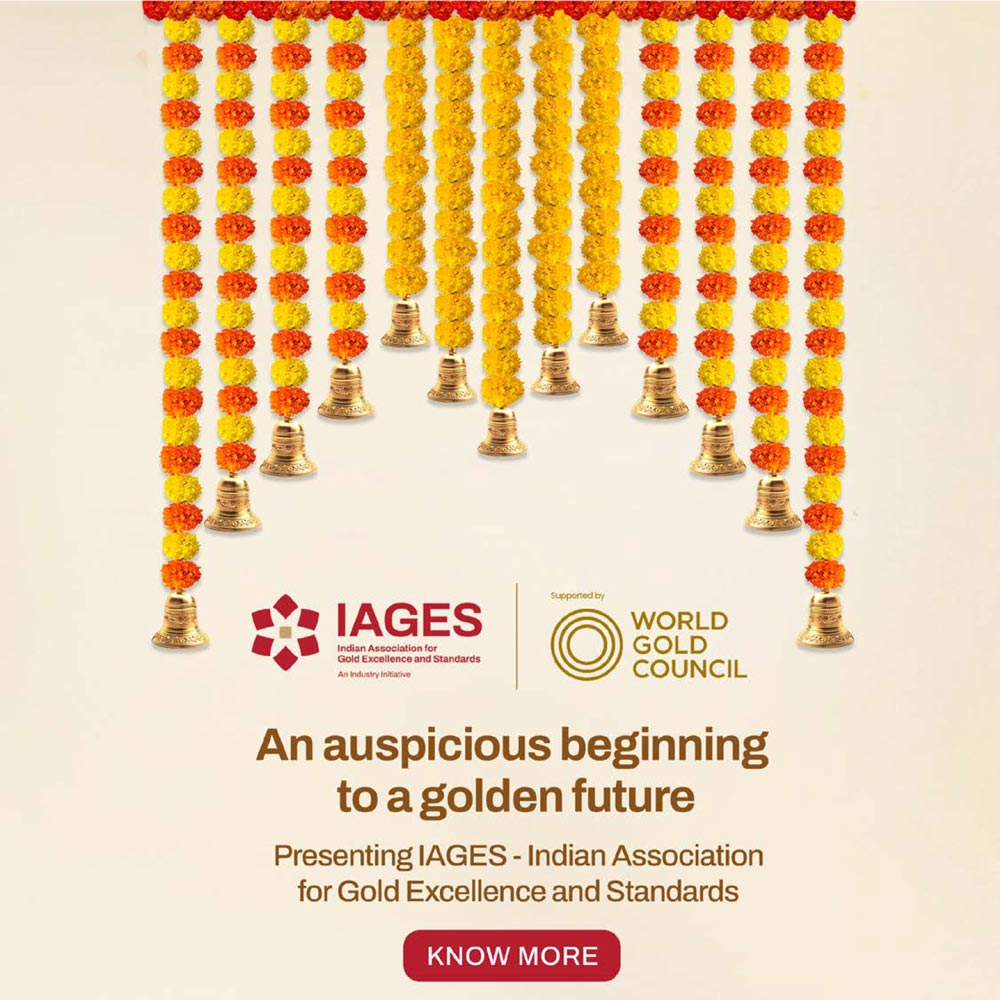
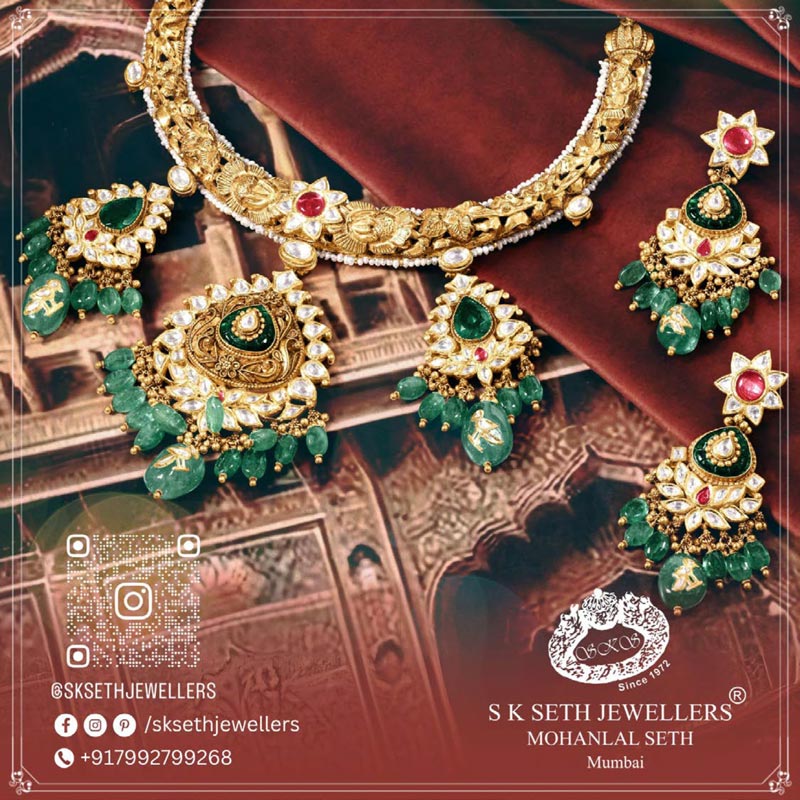
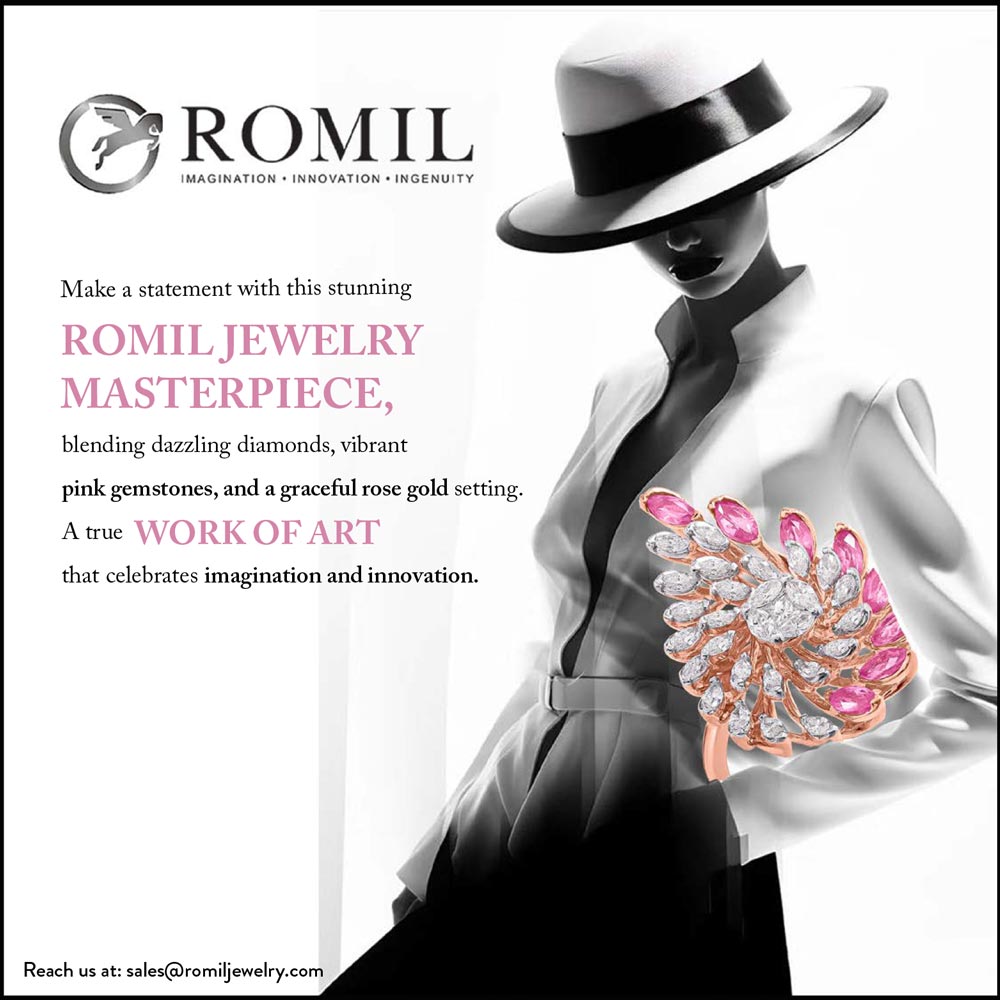
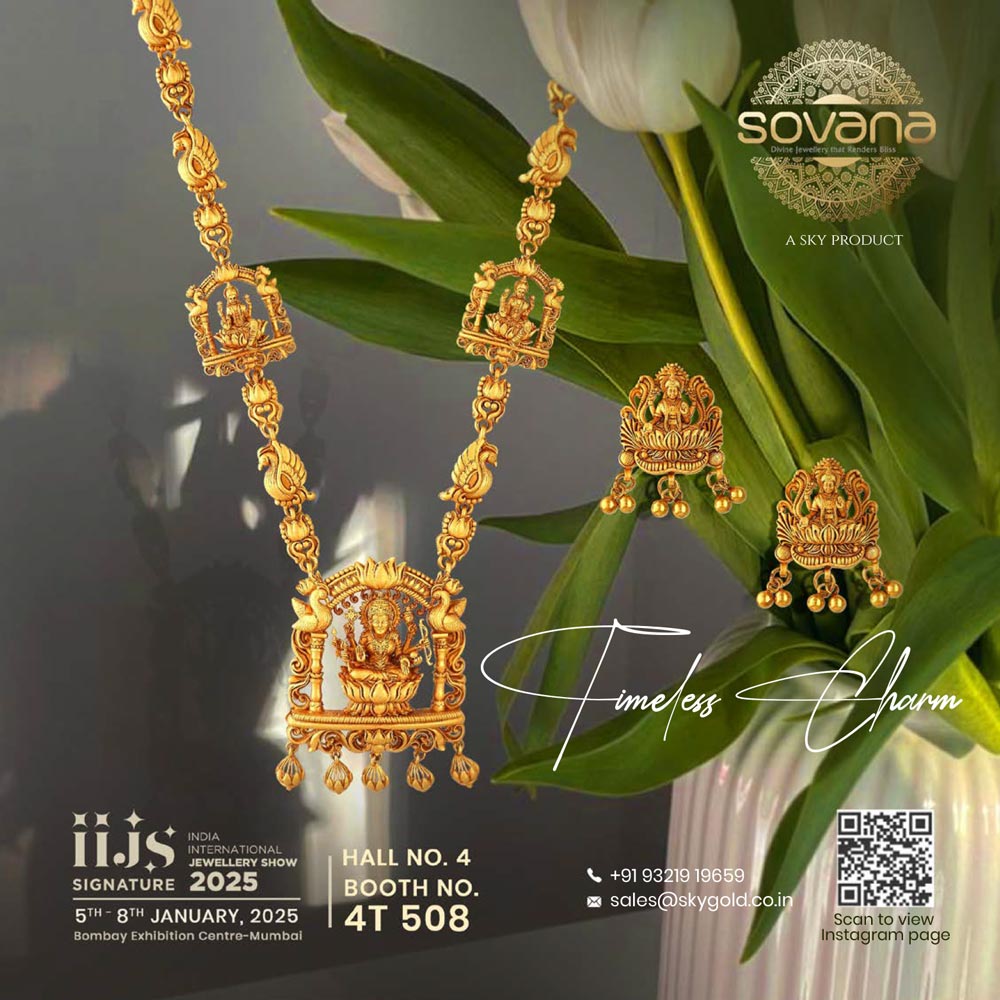
-
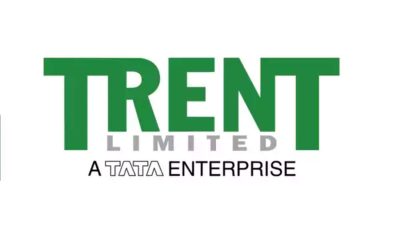
 Daily News2 months ago
Daily News2 months agoTrent, a TATA subsidiary, launches lab-grown diamond brand ‘Pome,’ shares surge 7.67%
-

 Daily News2 weeks ago
Daily News2 weeks agoMalabar Gold & Diamonds launches ‘Heritage Show’ in Mangalore, featuring jewellery inspired by Maharanis
-

 Daily News4 weeks ago
Daily News4 weeks agoSavji Dholakia’s visionary water conservation project ‘Bharatmata Sarovar’ reinforces commitment to sustainability
-
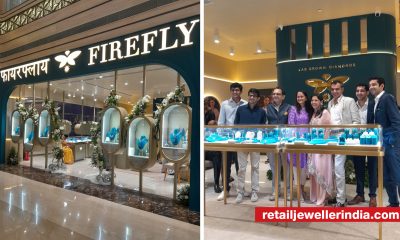
 Exclusive1 month ago
Exclusive1 month agoFirefly Diamonds makes a bold entry into Mumbai’s luxury retail scene with R City Mall store




